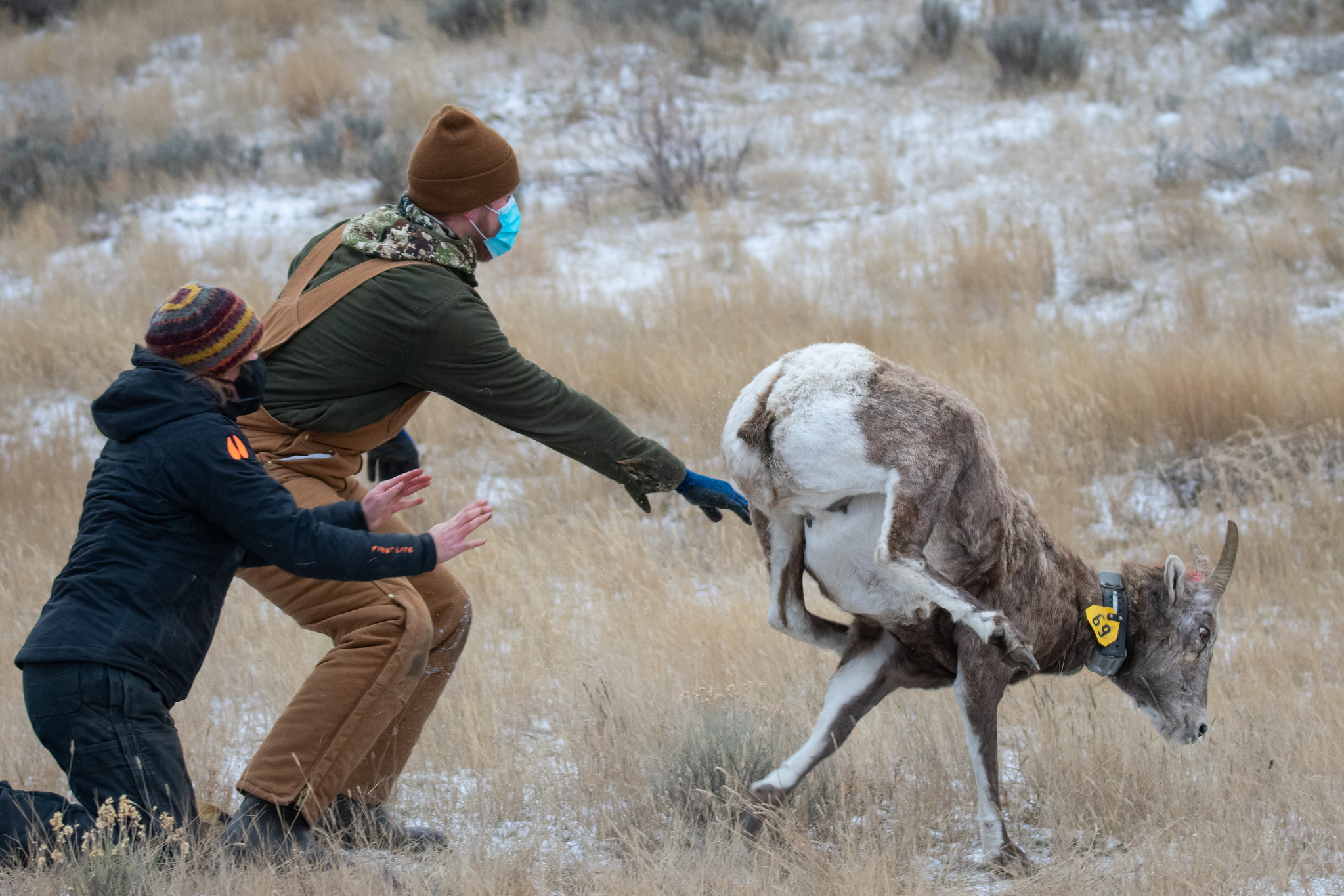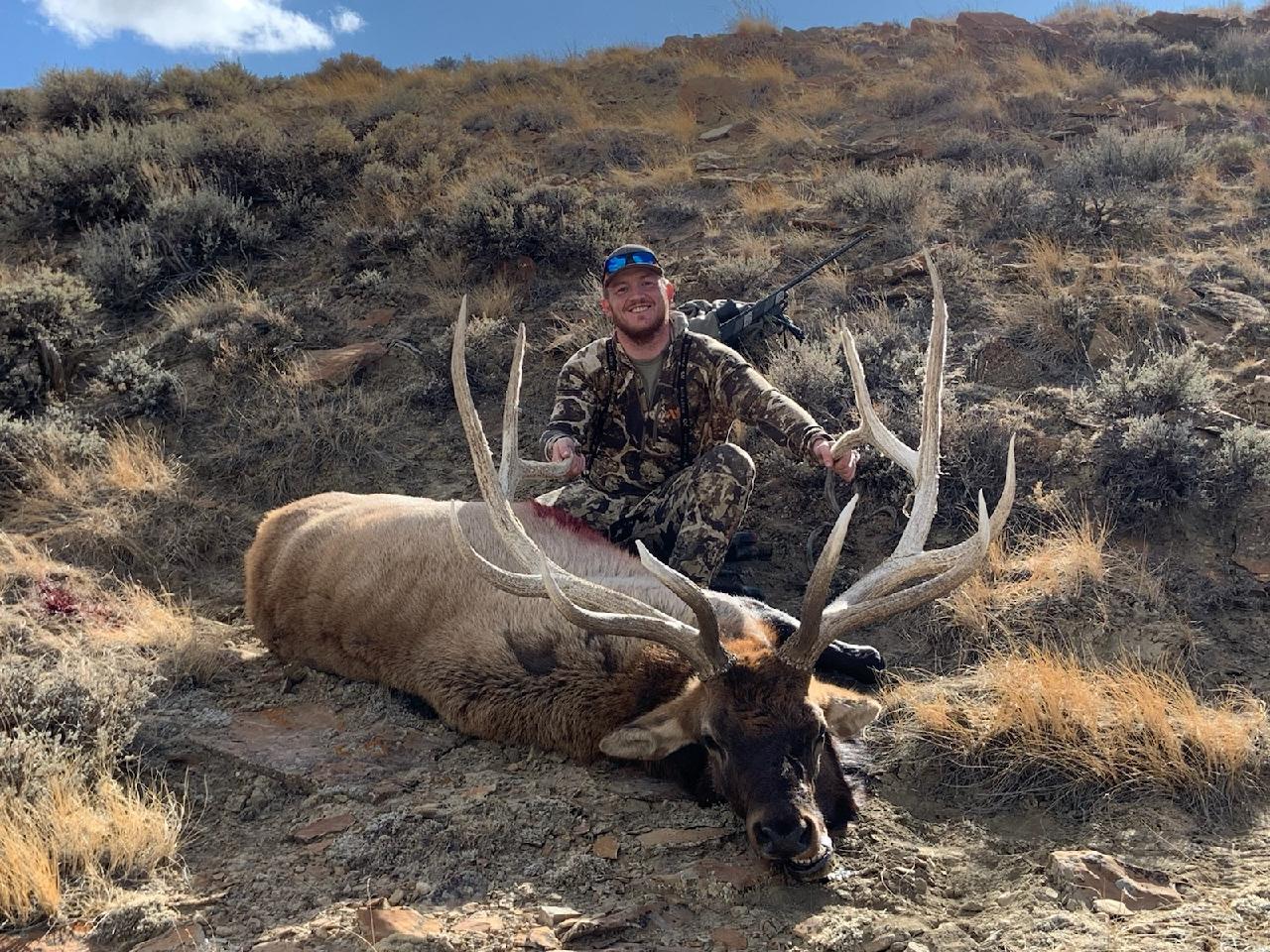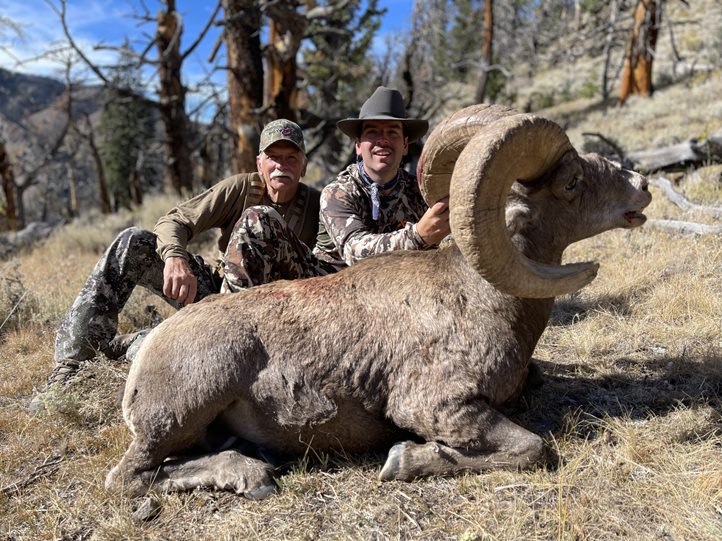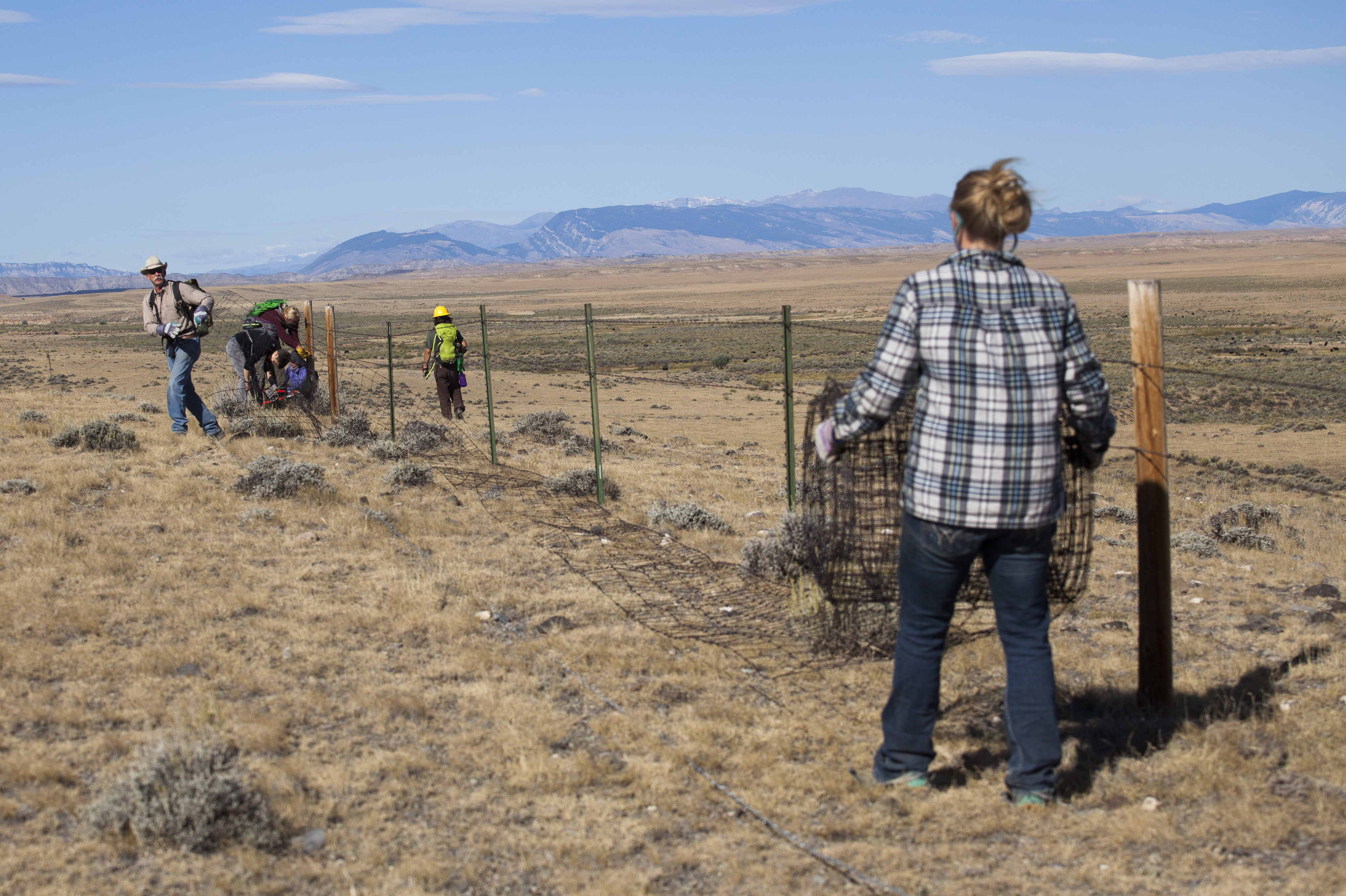This Friday Arizona’s Game and Fish Commission may direct the agency to consider alternatives to its controversial system of auctioning coveted hunting opportunities that raise millions of dollars for trophy big-game animals and their habitat.
It’s a surprisingly fraught decision for a state agency that has been among the most active brokers of auction tags, or selling to the highest bidder exclusive opportunities to hunt big-game animals that many resident hunters wait their entire lives to pursue.
In Friday’s meeting, Arizona’s wildlife manager will update the commission on the department’s evaluation of raffle and non-raffle tag distribution of the state’s Special Big Game License Tags. These tags raise millions of dollars that are earmarked for management of specific big-game species, both in Arizona and also in most other Western states,
Arizona law allows the department to broker up to three tags for each of its 10 big-game species, and while many tags are raffled, the most aspirational trophy opportunities are sold at auction to the highest bidder. Last year Arizona’s statewide mule deer tag sold for a record $725,000 at the Western Hunting and Conservation Expo. This year Arizona’s statewide desert bighorn sheep license was auctioned for a record $430,000 at the Wild Sheep Foundation’s annual convention held in January in Reno, Nevada.
That wasn’t even the priciest hunting license sold at what’s called the Sheep Show. In a single night in January, a record $6.5 million was raised on auction tags, with statewide bighorn sheep licenses in both Colorado and New Mexico fetching $600,000 apiece.
“It’s amazing the number of records that keep getting surpassed each year,” president and CEO of the Wild Sheep Foundation Gray Thornton said at the time. “The fact that a handful of individuals stepped up at these levels to put and keep more wild sheep on the mountain for everyone, and one day put more sheep permits into the public draws, is the definition of paying it forward. That’s the backbone of conservation.”
But the very fact that a handful of individuals are buying licenses for opportunities to hunt public wildlife is troubling to others, who say the arrangement stresses one of the tenets of America’s wildlife-conservation traditions: that access to wildlife should be equitably distributed.
As it happens, there is an alternative to selling tags to the highest bidder at auction. It’s a raffle, in which a partner conservation organization sells chances on tags similar to a lottery. Auctions are generally easier to administer, and are appealing to a small group of well-connected hunters willing to pay top dollar for licenses that are so limited in number that laws of supply and demand inflate their value. Raffles, on the other hand, take more time and administration, but can be considered more democratic, since anyone who buys a chance has the same opportunity to draw as any other raffle-ticket buyer. But for high-value species like bighorn sheep, raffles might not raise as much money as auctions, money that ultimately benefits both big-game animals and the public hunters who pursue them.
These are the alternatives that Arizona’s Fish and Wildlife Commission will consider on Friday, and because they’re so divergent, it’s worth looking at pros and cons of each arrangement.
The Case for Big-Game Tag Auctions
If a state agency is simply looking to maximize the amount of money for wildlife conservation, the auction model gets the nod. Taking North American wild sheep as one example, opportunities for hunting are so limited that in jurisdictions like Sonora, Mexico, or some Indian reservations, where permits are distributed by the market, tags routinely sell for mid-six-digit sums. Buying those opportunities are the only legitimate ways to guarantee a chance to hunt a trophy ram; public permits are so limited and the demand for them so high that the odds of pulling one in an annual agency draw are far less than 1 percent.
Sheep tags not sold at conservation auctions are often sold instead by outfitters, with very little habitat or management benefit accrued to the species.
Auction tags get headlines for their eye-popping prices, and as a window into the crazy economy of dedicated wild-sheep hunters, many of whom are on a quest to achieve a grand slam, or killing each of the four subspecies of North American rams. But few people understand the downstream public benefit of the revenue that auctions generate. Money earmarked for species conservation increases the number and distribution of herds, which results in more tags being made available for public distribution through agency draws.

It’s not just the designated species that benefits from this trickle-down conservation. Ecosystem projects that improve bighorn sheep habitat also benefit high-country mule deer, and elk, and fragile subalpine vegetation at the headwaters of the West’s major rivers.
In Utah, where statewide mule deer auction tags have raised over $10 million over the past decade, designated auction revenue has funded the purchase of thousands of GPS-linked wildlife collars. Biologists who have deployed those collars in research projects have identified important trends, including big-game migration corridors and the importance of maternal health in mule deer herds. Collar-generated data has highlighted the importance of productive summer range, which creates fatter does which in turn produce heavier fawns that have a better chance of surviving both predators and hard winters and recruiting into the next generation of mule deer. Based on those findings, Utah has launched an initiative to improve public-land habitats where mule deer raise their fawns.
The Case for Big-Game Tag Raffles
Raffles can provide many of those same benefits, with the advantage of complying with the public’s expectation that state agencies distribute hunting opportunities equitably. The difference is that revenue is raised at $20 a ticket, or maybe $100 a ticket. The revenue trickles in slowly, and requires a good deal of marketing, communications, and outreach in order to boost ticket sales. But there’s growing evidence that raffle-tag distribution can raise as much or more than auction sales, at least for some species.
Utah’s Conservation Permit Program is a good example. The state’s Division of Wildlife Resources sells 200 permits for opportunities to hunt everything from desert bighorn sheep to wild turkeys, for $5 a pop, and permits are drawn from the total number sold. The catch is that permit entries must be validated in person at the Western Expo, which boosts attendance at the annual show in Salt Lake City.
Last year Montana’s chapter of Backcountry Hunters & Anglers won approval from Montana’s Fish and Wildlife Commission to broker the 2024 statewide mule deer permit, and on May 15 will announce the raffle winner. The state chapter is selling unlimited tickets, at $20 apiece, in an attempt to beat the previous record for the statewide permit: $40,000.
“The last thing we want is to see less money raised for conservation,” says Kevin Farron, regional policy director for BHA, “but we’re trying to prove that in this day and age, by leveraging our contacts and by taking our campaign to the internet and social media, that we can raise just as much coin for conservation, if not more, than auction tags, and ensure that funding will still be earmarked for the species.”

Raffles have the added benefit of conforming to democratic distribution of hunting opportunity. One of the pillars of what’s come to be called the North American Model of wildlife conservation is the equitable access to wildlife resources. Auction tags, in which participants are jumping to the head of the line based on the size of their checking accounts, isn’t particularly democratic.
“I think we all hold our noses a little bit when we watch these auction tags go to the highest bidder at these banquets,” says Farron. “The solution isn’t to abolish auction tags, but rather to consider alternatives to the auction model, and if there’s an alternative to raise just as much money or more, I think you’d be hard-pressed to find somebody opposed to that.”
The Montana BHA chapter points to the success of BHA’s Wyoming chapter, which two years ago was given the opportunity to raffle a Wyoming commissioner’s tag for statewide mule deer, and ended up raising about $45,000, or triple the previous auction-tag revenue.
Farron notes that Montana’s statewide mule deer tag has sold at auction for a 10-year average of about $27,000, and he expects BHA’s raffle to raise substantially more than that.
As we’ve noted, one of the biggest criticisms of auction tags is that they simply don’t conform to our long-standing traditions of equal access to the public’s wildlife. Some things shouldn’t be for sale to the highest bidder, say critics of auctions, and that includes public wildlife.
While celebrating the record-breaking contributions of auction winners in January, the Wild Sheep Foundation’s Thornton acknowledged the problematic nature of the auction-tag model.
“While some may find this type of conservation funding contrary to the North American Conservation Model, the Model’s renowned spokesman, Shane Mahoney, disagrees, noting that the Model encourages states, provinces, and tribal/First Nations to fund wildlife agencies in the most effective manner. Allowing a few individuals passionate about a wildlife species to fund the majority of an agency’s budget for that species with very limited auction and raffle permits is the most effective, keeping pace with the increasing management costs for that species.”
If that seems like a convenient reading of conservation policy, consider that some state agencies, drawn to the towering revenue produced by auction tags, have suggested increasing the number of tags distributed by auction. After all, if a little revenue is good for the resource, surely a lot of revenue would be better. But in most cases, constituents of the agency have called for restraint, in order to ensure that as many “public” tags as possible are made available to applicants who often wait their entire lives to draw one of these coveted opportunities.
Besides the purity of auction tags, there’s also revenue leakage. In some cases (Arizona is one of them) 100 percent of the auction revenue is returned to the state agency to benefit the resource, and Arizona further requires that all the revenue go to on-the-ground projects. But in many cases 10 to 15 percent of the auction price is retained by the conservation group that brokers the sale in order to cover costs to promote and administer the auction.
Many state wildlife agencies offer their own version of the BHA’s raffle. They’re called Super Tags in Montana and Wyoming and Super Hunts! in Idaho. For a low entry ($5 per chance in Montana), participants can buy unlimited opportunities at statewide hunting licenses for mule deer, elk, moose, mountain boat, bison, and bighorn sheep. These raffles routinely raise anywhere from $25,000 to $40,000 in revenue that’s earmarked for law enforcement and for access projects.
The more raffles offered for individual species, the less money each will raise, because each contest siphons support from the next.

Ferron acknowledges that raffle tags might work for mule deer, moose, or mountain goat tags, which historically have sold for tens of thousands of dollars, but it may not be an effective revenue producer for high-dollar sheep tags that can sell for 10 times as much.
“I want to see as much money raised as possible for conservation efforts, especially for an animal like bighorn, which if you blow too hard can fall over dead,” he says. “In order to raise the amount of money their management requires, this sort of auction-tag opportunity is really important, from a fundraising perspective.”
Funds raised from private contributions, whether by auction or raffle, are multiplied two to three times by federal and other non-state revenue, to be used on designated habitat projects. So states looking to maximize the amount of funds available for GPS collars, or translocation projects, or to do landscape-scale habitat work, are better off with the arrangement that raises the most revenue. That’s the auction model.

Arizona’s Big Decision
Will Arizona on Friday pull its support for the auction tags that have been so successful for its bighorn-sheep management program? Will it put conditions on the auction? Will the commission double its support for raffles? Or will it opt for a third way of special-species funding?
The Arizona Desert Bighorn Sheep Society has some ideas. The group was one of the first to propose auction tags as a funding source and strongly advocates for retaining the current arrangement of auction tags plus raffles.
“Over the last twenty years the Special Big Game Tag (SBGT) program has raised more than $9.6 million for bighorn sheep conservation and management in Arizona,” the group wrote Arizona’s commission. “Of that total $6.8 million was raised through auction sales and $2.8 million through raffle sales resulting in a fundraising effectiveness ratio of more than 2:1 in favor of auctions.”
Many groups watching the decision are flummoxed by the Arizona wildlife commission’s decision to take up the question of auction vs. raffle arrangements.
“Certain commissioners have stated they believe all auction tags should be eliminated,” the pro-hunting group Howl for Wildlife wrote this week. “In the same breath, they have said they don’t really know what a different plan looks like at this time. While it is true that a new alternative to auction tags might be out there, the commission has yet to show the public they have an action plan in place that provides a sustainable, manageable, and cost-efficient alternative better than what is currently in place. That is the threat. Experimenting with Arizona wildlife resources and being willing to accept less funding for wildlife…. This is another threat.”
But Farron articulates one of the softer advantages of the raffle model, as compared to the auction model.
“From an onlookers’ standpoint, I’m way more excited for that person who hugs their wife and jumps up and down in disbelief when their $20 ticket is plucked out of a raffle hat than I am for the Sultan of Malaysia who phones in a winning bid for a trophy animal.”
